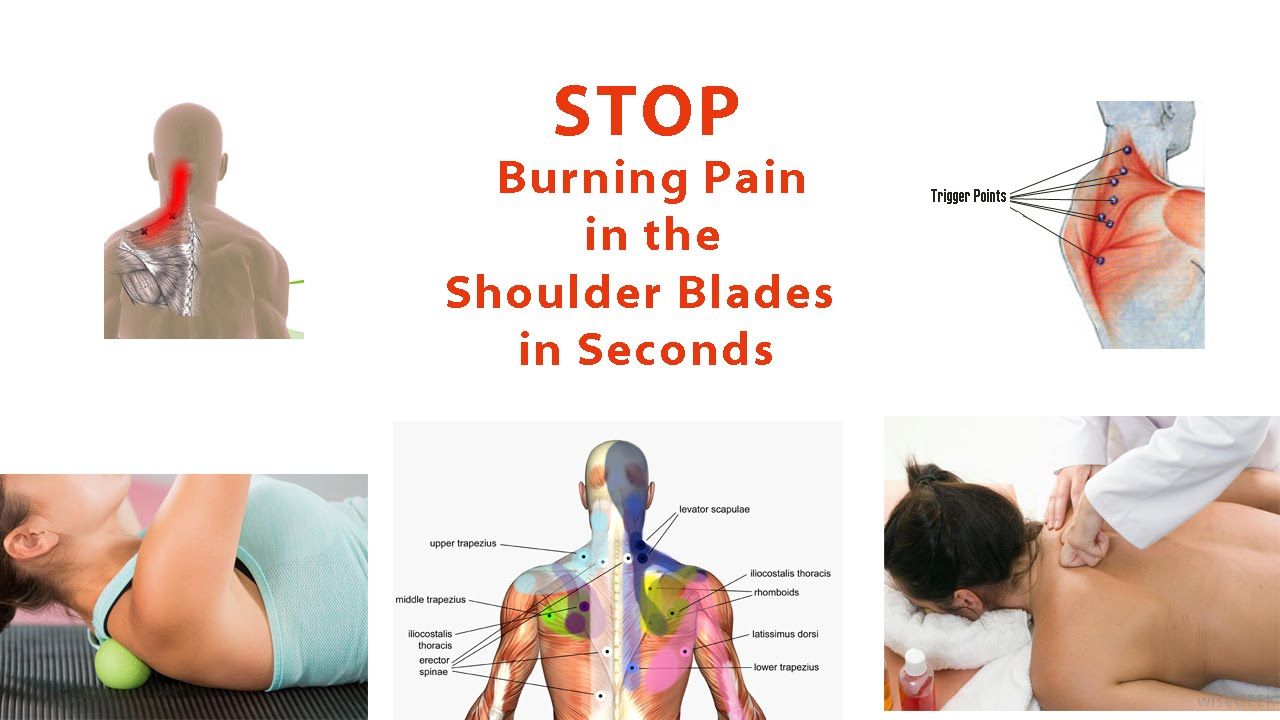Symptoms of a broken shoulder blade. Scapula Fracture: Symptoms, Causes, and Treatment Options for Shoulder Blade Injuries
What are the common symptoms of a scapula fracture. How is a broken shoulder blade diagnosed. What treatment options are available for scapula fractures. When is surgery necessary for a shoulder blade fracture. How long does recovery take after a scapula injury.
Understanding Scapula Fractures: An Overview of Shoulder Blade Injuries
A scapula fracture, also known as a shoulder blade fracture, is a relatively uncommon injury that accounts for less than 1% of all broken bones. Despite its rarity, this type of fracture can cause significant pain and impairment of shoulder function. The scapula is a triangular-shaped bone protected by a complex system of surrounding muscles, making it resilient to injury. However, high-energy trauma can overcome these protective structures, resulting in fractures.
Anatomy of the Scapula
The scapula consists of several key parts that can be affected by fractures:
- Scapular body (50-60% of fractures)
- Scapular neck (25% of fractures)
- Glenoid
- Acromion
- Coracoid
Understanding the anatomy of the scapula is crucial for proper diagnosis and treatment of fractures in this area.

Common Causes of Scapula Fractures: High-Energy Trauma and Accidents
Scapula fractures typically result from high-energy, blunt trauma injuries. Some common causes include:
- Motor vehicle accidents
- Motorcycle collisions
- Falls from significant heights
- Direct blows to the shoulder area
Due to the force required to fracture the scapula, these injuries are often accompanied by other serious injuries to surrounding structures such as the shoulder, collarbone, ribs, head, lungs, or spinal cord. This makes prompt medical evaluation crucial for anyone suspected of having a scapula fracture.
Recognizing the Symptoms: Key Indicators of a Broken Shoulder Blade
Identifying the symptoms of a scapula fracture is essential for seeking timely medical attention. The most common symptoms include:
- Extreme pain when moving the arm
- Swelling around the back of the shoulder
- Scrapes or abrasions in the affected area
- Limited range of motion in the shoulder
- Visible deformity of the shoulder
Are these symptoms always indicative of a scapula fracture? While these symptoms strongly suggest a potential fracture, a proper medical evaluation is necessary for a definitive diagnosis. Some patients may experience milder symptoms, especially if the fracture is not displaced.

Diagnostic Procedures: Identifying and Assessing Scapula Fractures
Accurate diagnosis of a scapula fracture involves a combination of physical examination and imaging studies. The diagnostic process typically includes:
- Physical examination: The doctor evaluates the position and posture of the shoulder, looking for signs of injury and assessing pain levels.
- X-rays: These provide clear images of bone structures and can reveal most fractures.
- CT scans: For more detailed imaging, especially in complex fractures or when surgical planning is necessary.
Why is a thorough diagnostic process important? Proper diagnosis ensures appropriate treatment selection and helps identify any associated injuries that may require immediate attention.
Treatment Options: Conservative Management vs. Surgical Intervention
The treatment of scapula fractures depends on the type, location, and severity of the fracture. Treatment options generally fall into two categories:
Nonsurgical Treatment
Most scapula fractures can be treated conservatively without surgery. This typically involves:
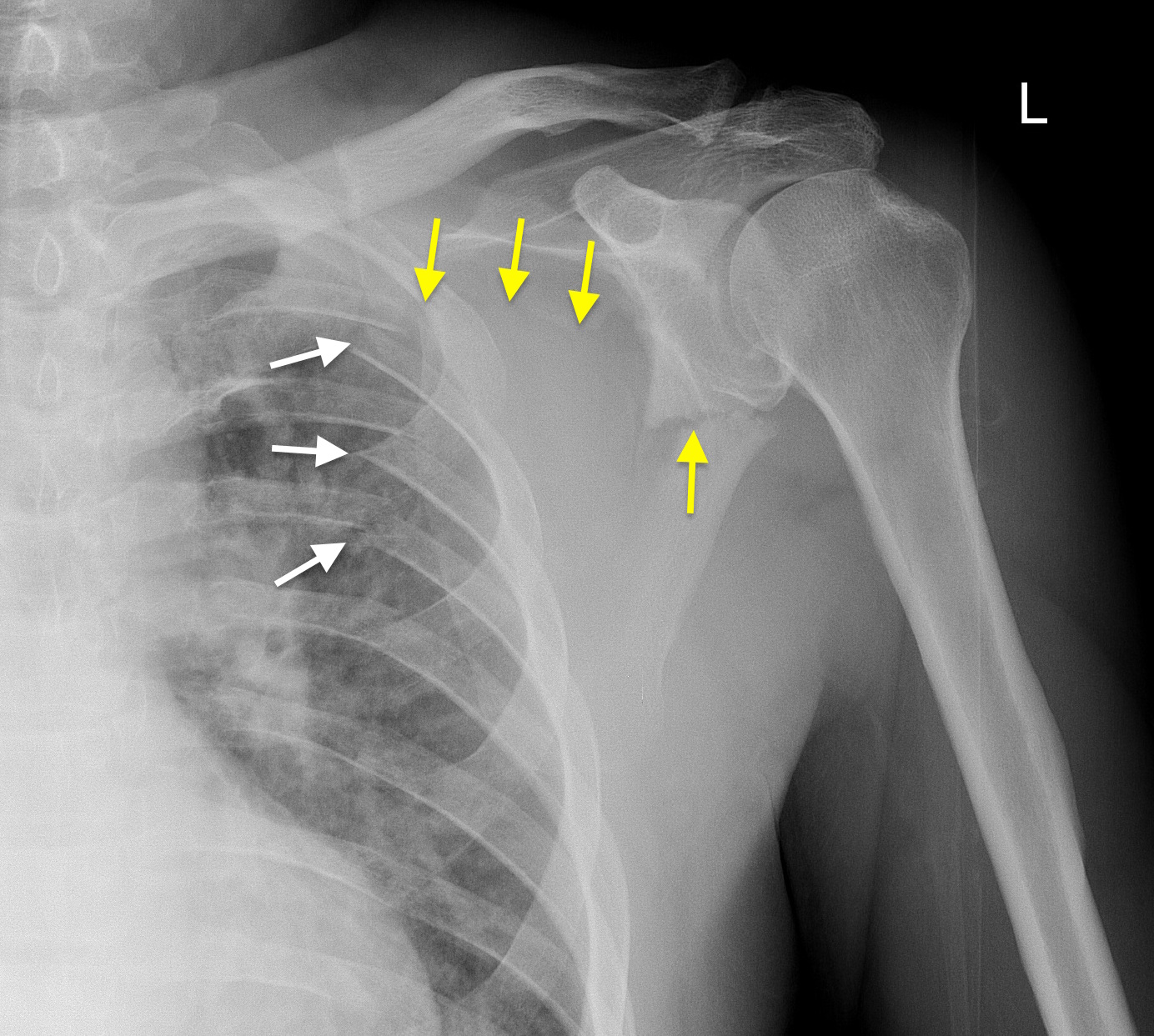
- Use of a sling to immobilize the shoulder
- Early mobilization exercises to prevent stiffness
- Pain management techniques
- Gradual return to activities as healing progresses
Surgical Treatment
Surgery may be necessary in certain cases, such as:
- Displaced fractures of the glenoid articular surface
- Significantly angulated fractures of the scapular neck
- Acromion fractures causing impingement syndrome
Surgical intervention typically involves repositioning the bone fragments and securing them with plates and screws.
How long does recovery take after a scapula fracture? Recovery time can vary significantly depending on the severity of the injury and the chosen treatment method. Generally, full recovery can take anywhere from 6 months to a year, with proper rehabilitation and follow-up care.
Pain Management: Balancing Relief and Safety in Scapula Fracture Recovery
Effective pain management is crucial for patient comfort and optimal healing after a scapula fracture. Pain management strategies may include:

- Over-the-counter pain medications
- Prescription pain relievers, including opioids (used cautiously)
- Non-steroidal anti-inflammatory drugs (NSAIDs)
- Local anesthetics
- Ice therapy
- Physical therapy techniques
Is opioid use safe for pain management in scapula fractures? While opioids can provide effective pain relief, they carry risks of dependency and addiction. It’s crucial to use them only as directed by a healthcare provider and to transition to non-opioid pain management strategies as soon as possible.
Rehabilitation and Recovery: Restoring Function After a Scapula Fracture
Rehabilitation plays a vital role in recovery from a scapula fracture. The rehabilitation process typically involves:
- Early mobilization exercises to prevent stiffness
- Gradual increase in range of motion exercises
- Strengthening exercises for the shoulder and surrounding muscles
- Functional training to restore normal shoulder mechanics
- Return to sport or work activities under professional guidance
What factors influence the rehabilitation timeline? The severity of the fracture, the chosen treatment method, the patient’s overall health, and compliance with the rehabilitation program all play roles in determining the speed and extent of recovery.

Preventing Complications: Long-Term Considerations in Scapula Fracture Management
While most scapula fractures heal well with proper treatment, some potential complications can arise. These may include:
- Shoulder stiffness or frozen shoulder
- Chronic pain
- Impingement syndrome
- Malunion or nonunion of the fracture
- Post-traumatic arthritis
How can patients minimize the risk of complications? Following the prescribed treatment plan, attending all follow-up appointments, and participating actively in rehabilitation can help reduce the risk of long-term complications. Early recognition and management of any developing issues are also crucial for optimal outcomes.
Understanding the intricacies of scapula fractures, from diagnosis to treatment and rehabilitation, is essential for both healthcare providers and patients. While these injuries can be serious, proper management typically leads to good functional outcomes. As with any medical condition, individualized care tailored to the specific needs of each patient remains the cornerstone of effective treatment for scapula fractures.

Scapula (Shoulder Blade) Fractures – OrthoInfo
The shoulder blade (scapula) is a triangular-shaped bone that is protected by a complex system of surrounding muscles. Scapula fractures represent less than 1% of all broken bones and many of them can be treated without surgery.
High-energy, blunt trauma injuries, such as those experienced in a motorcycle or motor vehicle collision or falling from a significant height, can cause a scapula fracture. Other major injuries often accompany scapular fractures, such as fractures in the shoulder, collarbone and ribs, or damage to the head, lungs, or spinal cord.
One or more parts of the scapula may be fractured.
- Scapular body (50% to 60% of patients)
- Scapular neck (25% of patients)
- Glenoid
- Acromion
- Coracoid
Fracture patterns in the scapula
Reproduced from Zuckerman JD, Koval KJ, Cuomo F: Fractures of the scapula, in Heckman JD (ed): Instructional Course Lectures 42. Rosemont, IL, American Academy of Orthopaedic Surgeons, 1993, pp 271-281.
Rosemont, IL, American Academy of Orthopaedic Surgeons, 1993, pp 271-281.
The most common symptoms of a scapula fracture include:
- Extreme pain when you move the arm
- Swelling around the back of the shoulder
- Scrapes around the affected area.
To determine appropriate treatment, your doctor will evaluate the position and posture of your shoulder. Because other injuries are often present with scapula fractures, your doctor will look for additional injuries. He or she will also treat any soft-tissue damage (abrasions, open wounds, and muscular trauma). A detailed physical examination may not be possible if you have other severe injuries.
Your doctor may also order imaging tests of your shoulder and chest to determine the extent of injury to the scapula. X-rays provide clear images of dense structures like bone. Your doctor may also order a computed tomography (CT) scan to provide a more detailed image.
Nonsurgical Treatment
Nonsurgical treatment with a simple sling works for most fractures of the scapula. The sling holds your shoulder in place while the bone heals. Your doctor may want you to start moving your shoulder within the first week after the injury to minimize the risk of shoulder and elbow stiffness. The sling is discontinued as your pain improves. Passive stretching exercises should be continued until complete shoulder motion returns. This may take 6 months to 1 year.
The sling holds your shoulder in place while the bone heals. Your doctor may want you to start moving your shoulder within the first week after the injury to minimize the risk of shoulder and elbow stiffness. The sling is discontinued as your pain improves. Passive stretching exercises should be continued until complete shoulder motion returns. This may take 6 months to 1 year.
Surgical Treatment
Certain types of scapular fractures may need surgery:
- Fractures of the glenoid articular surface in which bone has moved out of place (displaced)
- Fractures of the neck of the scapula with a lot of angulation
- Fractures of the acromion process that cause the arm bone to hit against it (impingement syndrome)
During this operation, the bone fragments are first repositioned (reduced) in their normal alignment, and then held together by attaching metal plates with special screws to the outer surface of the bone.
Pain Management
Pain after an injury or surgery is a natural part of the healing process. Your doctor and nurses will work to reduce your pain, which can help you recover faster.
Your doctor and nurses will work to reduce your pain, which can help you recover faster.
Medications are often prescribed for short-term pain relief after surgery or an injury. Many types of medicines are available to help manage pain, including opioids, non-steroidal anti-inflammatory drugs (NSAIDs), and local anesthetics. Your doctor may use a combination of these medications to improve pain relief, as well as minimize the need for opioids.
Be aware that although opioids help relieve pain after surgery or an injury, they are a narcotic and can be addictive. Opioid dependency and overdose has become a critical public health issue in the U.S. It is important to use opioids only as directed by your doctor. As soon as your pain begins to improve, stop taking opioids. Talk to your doctor if your pain has not begun to improve within a few days of your treatment.
To Top
Shoulder Blade (SCAPULA) Fracture | Broken Treatment Las Vegas, Mesquite Nevada
Broken Shoulder Blade Treatment
Shoulder blade fractures are not very common injuries. They can result in inflammation and pain in the shoulder arc. Shoulder blade fractures can be caused by blunt and high energy trauma incidents. This can be in the form of car accidents or falls. This fracture type is generally treated in non-surgical ways. However, they may require surgery in some instances depending on its severity.
They can result in inflammation and pain in the shoulder arc. Shoulder blade fractures can be caused by blunt and high energy trauma incidents. This can be in the form of car accidents or falls. This fracture type is generally treated in non-surgical ways. However, they may require surgery in some instances depending on its severity.
Shoulder blade fractures can often result in severe injuries to the chest, lungs, and internal organs. It is important, for this reason, to attain medical attention if you fracture your shoulder blade.
Thomas & Bigler Knee and Shoulder Institute, led by board certified orthopedic surgeons Dr. Steven C. Thomas and Dr. Gregory T. Bigler, provides orthopedic surgery to patients in Las Vegas, Nevada, while also serving areas such as greater Pahrump, Bullhead City, Lake Havasu, and Mesquite, NV.
Anatomy of Your Shoulder Blade
A complex system of muscles protects your shoulder blade, which is in a triangular shape. The rotator cuff, which is again a combination of tendons and muscles, helps in keeping your arm bone centered within the shoulder socket. The rotator cuff is responsible for covering the upper arm bone’s head and keeping it attached to the shoulder blade.
The rotator cuff is responsible for covering the upper arm bone’s head and keeping it attached to the shoulder blade.
Why Do Shoulder Blade Fractures Take Place?
Shoulder blade fractures occur during blunt trauma injuries, such as falls or car accidents. The injury is often accompanied by trauma to the lungs, chest, and other internal organs as well. This is why it is important to get in touch with an orthopedic surgeon to prevent any injury from taking a downturn.
Fortunately, shoulder blade fractures are not very common. They constitute to 1% of all broken bones. Men aged 25 to 45 suffer from the most shoulder blade fractures.
Symptoms of Shoulder Blade Fracture
These are a few common symptoms of fracture of the shoulder blade:
- Inflammation at the back of the shoulder
- Severe pain while using the arm
- Bruises around the shoulder
- Scraps around the shoulder
You should seek immediate medical attention if you have the following symptoms:
- Shortness of breath
- Abdominal pain
- Decreased sensation
Fractures of the shoulder blade can be treated in both surgical and nonsurgical ways.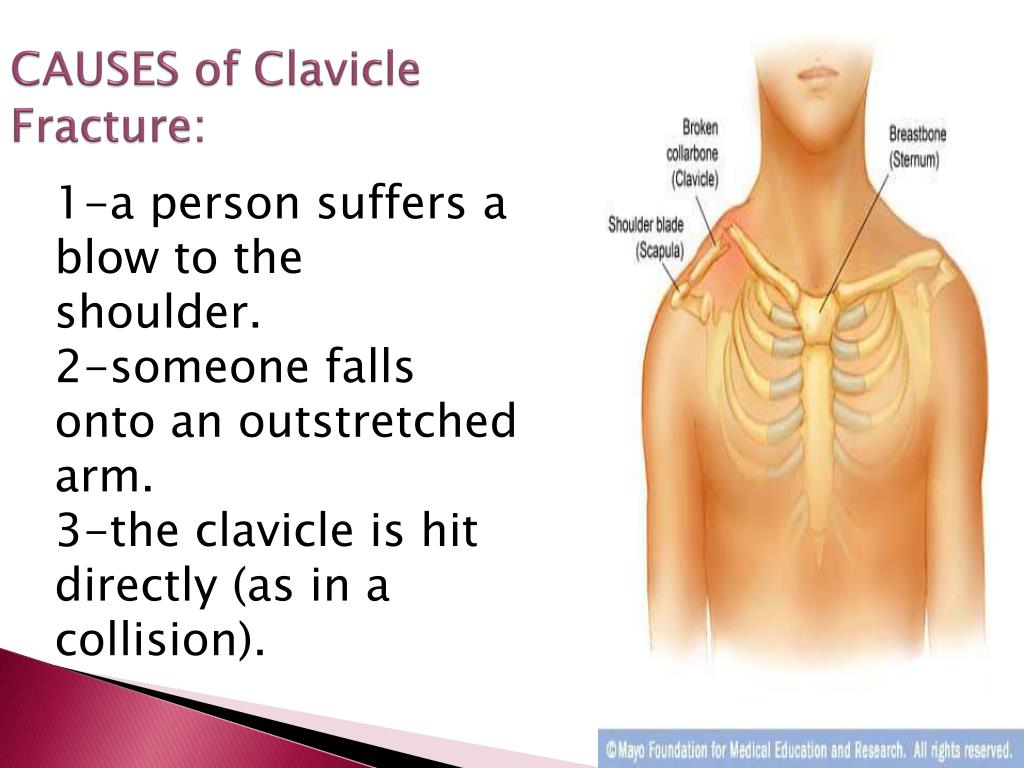
Non-Surgical Approach
You may not need a surgery depending on the severity of your fracture. It is important that you immobilize your arm and shoulder immediately after the injury. You should also apply ice to reduce inflammation and discomfort. Non-surgical treatments typically involve slings to keep the arm from moving accidentally.
Your physician may prescribe rehabilitation exercises after the first one week to prevent the risk of elbow and shoulder stiffness. You should continue with stretching exercises until you regain complete shoulder motion. This can take anywhere from 6 months to a year.
Surgical Approach
Surgery may be necessary if your shoulder blade fracture is extensive. Fragments of your shoulder blade bone will be repositioned in a proper alignment. They will be held in place using metal plates and special screws on the bone’s outer surface.
Orthopedic surgeons Dr. Thomas and Dr. Bigler receive patients from Las Vegas, Nevada as well as greater Pahrump, Bullhead City, Lake Havasu, and Mesquite, NV for orthopedic surgery.
Contact
Board Certified Surgeons Dr. Bigler or Dr. Thomas at the Knee and Shoulder Institute in Las Vegas, NV to Schedule an Appointment:
If you would like to schedule an appointment or learn more about the Knee and Shoulder Institute procedures & treatments performed by Las Vegas, Nevada board-certified surgeons Steven C. Thomas, MD and Gregory T. Bigler, MD. Contact the office today click here.
Serving patients from and around greater Las Vegas, Lake Havasu, Bullhead City, Mesquite, Pahrump, Nevada
Spread the love
Posted in Knee & Shoulder Treatments
Contact Us
702.933.9393
9499 West Charleston, Suite 200Las Vegas, NV 89117
We are excited to announce that within the next few months Thomas and Bigler Knee and Shoulder Institute will be expanding our Institute with the addition of 3 additional fellowship trained Orthopedic Surgeons. Two of them will specialize in general orthopedic surgery of all body parts with special emphasis on sports related injuries and joint replacement surgery. The third will specifically specialize in Joint Replacement surgery of the Hip and Knee. Hip, Shoulder, and Knee replacement and revision surgery will be available, as well as general care of all other orthopedics conditions. This will increase our Doctors to 5 of the most highly trained and qualified orthopedic surgeons in our community.
The third will specifically specialize in Joint Replacement surgery of the Hip and Knee. Hip, Shoulder, and Knee replacement and revision surgery will be available, as well as general care of all other orthopedics conditions. This will increase our Doctors to 5 of the most highly trained and qualified orthopedic surgeons in our community.
This will close in 20 seconds
Fracture of the scapula – causes, symptoms, diagnosis and treatment
Fracture of the scapula is a violation of the integrity of the scapula as a result of traumatic impact. Occurs quite rarely and is usually combined with fractures of the ribs. It is manifested by pain in the scapular region, swelling and limitation of movements of the upper limb. In some cases, subcutaneous hemorrhage or brachial hemarthrosis is noted. Pathology is diagnosed on the basis of anamnesis, physical examination data and X-ray examination. The method of treatment depends on the site of the fracture of the scapula, may consist in the imposition of a fixing bandage or skeletal traction for 1 month.
General information
Fractures of the scapula are quite rare in traumatology, accounting for 0.3-1.5% of the total number of skeletal injuries. As a rule, occur simultaneously with fractures of the ribs. A fracture of the acromial process may be combined with a fracture or dislocation of the acromial end of the clavicle, a fracture of the articular process with dislocation of the shoulder. Traumatic injury is more often detected in men of working age, the peak incidence occurs at 40-60 years.
Causes
Fractures of the scapula occur due to domestic, street and industrial injuries, road accidents. Localization of damage is determined by the mechanism of injury:
- Direct impact : fall on the back, strong blow. It prevails in the structure of morbidity, observed in fractures of the angles, spine, body of the scapula.
- Indirect impact : fall with emphasis on the hand or on the area of the elbow joint with the limb abducted.
 It causes fractures of the neck, coracoid, acromial processes of the scapula, articular cavity.
It causes fractures of the neck, coracoid, acromial processes of the scapula, articular cavity.
Pathogenesis
The scapula is a flat paired bone. It is located on the back of the chest on the side of the spine. It is part of the so-called upper shoulder girdle and is involved in the movements of the upper limb. It has a complex structure, including the body, spine, two processes, neck and articular cavity. Fractures of the scapula due to the peculiarities of its location are usually not accompanied by a pronounced displacement.
The most complex are multi-comminuted fractures of the body, as well as fractures of the acromial process, the neck of the scapula, in which displacement of bone fragments is more often observed. A fracture of the glenoid cavity belongs to the category of intra-articular, and can have a negative impact on the function of the shoulder joint due to a violation of the integrity of the articular surface, especially in the presence of free-lying fragments.
Classification
In modern traumatology and orthopedics systematization of fractures of the scapula is used, taking into account localization, which allows choosing the optimal treatment tactics and making a prognosis. There are the following types of injuries:
- multifragmented, transverse, longitudinal fractures of the body of the scapula;
- fractures of the acromial and coracoid processes of the scapula;
- fracture of the surgical and anatomic neck of the scapula;
- fracture of the articular cavity;
- fracture of the lower and upper inner corners;
- fracture of the spine of the scapula.
Symptoms of a scapular fracture
The clinical picture is determined by the location of the fracture. In case of damage to the corners, spine and body of the bone, pain occurs, swelling appears in the affected area due to hemorrhage into nearby soft tissues.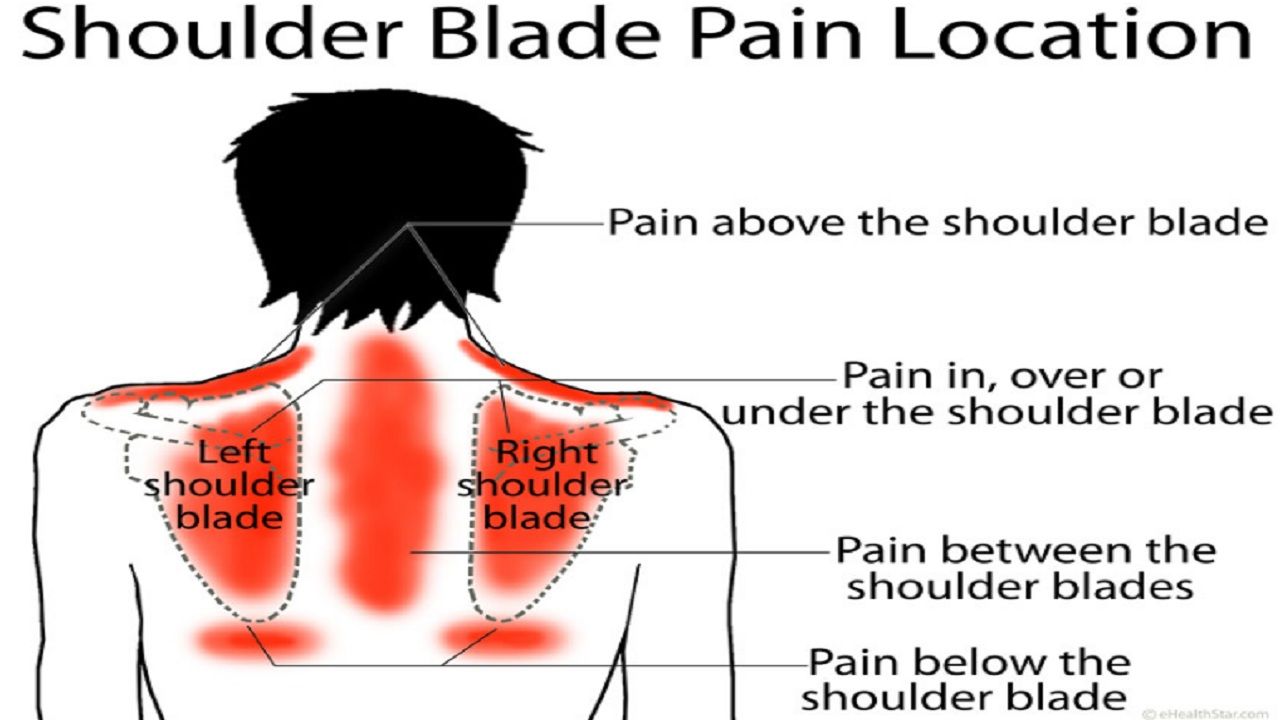 Local edema usually corresponds to the shape of the scapula, interpreted as a symptom of a “triangular pillow”. Moderate restrictions on the movements of the upper limb are revealed, independent lifting of the arm is impossible.
Local edema usually corresponds to the shape of the scapula, interpreted as a symptom of a “triangular pillow”. Moderate restrictions on the movements of the upper limb are revealed, independent lifting of the arm is impossible.
Deformity in displaced fractures is not always visualized due to severe swelling, which also makes palpation difficult and can cause underdiagnosis. When feeling, the displacement of fragments, bone crepitus, and pathological mobility can be determined. Palpation of the damaged area is sharply painful.
In case of fractures of the articular cavity, the patient complains of pain in the projection of the shoulder joint. The joint is swollen, deformed, a sharp limitation of movements is detected. The contours of the surrounding bone structures are changed, the protrusion of the acromion is noted, the retraction of tissues under the acromial process. Palpation sometimes reveals a bone crunch.
Fractures of the coracoid process and acromion are manifested by local pain and swelling of the surrounding soft tissue structures. In the projection of the fracture, a bruise is formed, reaching a maximum by 2-3 days. Movements are limited, palpation is painful, sometimes crepitus is found.
In the projection of the fracture, a bruise is formed, reaching a maximum by 2-3 days. Movements are limited, palpation is painful, sometimes crepitus is found.
Complications
Rarely, scapular fractures are complicated by trauma to the brachial plexus, axillary artery, or nerve. If the integrity of the vessel is violated, intense internal bleeding can be observed. When the nerve is ruptured and compressed, sensation and movement disorders are noted, which sometimes completely or partially persist after the fracture has healed. When the glenoid cavity of the scapula is damaged, hemarthrosis occurs.
In some patients, a “floating” (excessively mobile) scapula is detected in the long-term period, the development of which is due to atrophy of the surrounding muscles. Among the late complications of intra-articular fractures include arthrosis of the shoulder joint, limitation of movements of varying severity. After conservative treatment of intra-articular injuries, habitual dislocations of the shoulder are sometimes diagnosed.
Diagnosis
Examination is carried out in the emergency room of the trauma department, the diagnosis is made based on the results of a consultation with a traumatologist. The following methods apply:
- Visual inspection . In favor of a fracture of the scapula, depending on its location, the presence of a “triangular pillow”, a characteristic limitation of movements, and severe pain testify. Undoubted signs of a fracture are pathological mobility of fragments and bone crepitus.
- Radiography . It is the main method of instrumental diagnostics. For most fractures, radiographs of the scapula are performed in frontal and lateral projections. If the glenoid cavity is damaged, an x-ray of the shoulder joint is shown.
- Other imaging techniques . They are of secondary importance. To clarify the features of the fracture and the location of the fragments in multi-fractured fractures, CT of the scapula is prescribed.
 To assess the state of the surrounding structures, an MRI of soft tissues is performed.
To assess the state of the surrounding structures, an MRI of soft tissues is performed. - Shoulder puncture . It is carried out with injuries of the articular cavity. It is a therapeutic and diagnostic manipulation that allows you to confirm the presence of blood in the joint cavity, to carry out its evacuation.
In the presence of concomitant injuries (injuries to the chest, spine), the list of diagnostic methods is expanded. In case of rupture or compression of the neurovascular bundle, the examination plan includes consultations with a vascular surgeon, neurologist or neurosurgeon.
KT OGK. Fracture of the wing of the right scapula.
Treatment of a fractured scapula
First aid
At the prehospital stage, the hand on the side of the lesion is fixed with a bandage or a wire splint. If intra-articular damage or rupture of the vessel is suspected, cold is applied (an ice pack or heating pad wrapped in a towel) to the joint area. With intense pain, give analgesics. Attempts to reduce are strictly prohibited due to the possibility of developing a secondary displacement.
With intense pain, give analgesics. Attempts to reduce are strictly prohibited due to the possibility of developing a secondary displacement.
Conservative therapy
Upon admission, the traumatologist performs local anesthesia of the fracture area. The method of immobilization is determined by the location of the injury:
- In case of fractures without displacement, a Dezo bandage is applied to support the forearm and fix the shoulder to the chest. A roller is placed in the armpit. On the 10-11th day, the bandage is removed, the patient’s hand is hung on a scarf bandage.
- In case of fracture of the acromion with displacement of the fragments, an abduction splint is used for a period of 4-6 weeks.
- Treatment of fractures of the articular cavity and neck of the scapula with displacement is carried out using cutaneous or skeletal traction for a period of 1 month. Subsequently, a thoracobrachial bandage is applied for 3 weeks.

Complete fusion occurs within 1-2.5 months. In the early days, with severe pain, analgesics are administered intramuscularly. Patients are prescribed physical therapy, massage, physiotherapy. Apply the following physiotherapy:
- UHF – promotes vasodilation, activation of blood circulation and tissue metabolism;
- magnetotherapy – stimulates the formation of bone tissue;
- interference currents – accelerate the resorption of bruises, reduce pain, eliminate swelling;
- drug electrophoresis – the use of local anesthetics can reduce the severity of pain, the use of hydrocortisone reduces inflammation.
Surgical treatment
Surgical treatment of scapular fractures is rarely used.
- intra-articular injuries are considered as indications, if the fragments are displaced by 5 or more millimeters, the fracture line extends to a quarter or more of the articular surface;
- fractures of the neck, if the fragments are displaced by more than 10 mm, the angle of the articular cavity is changed by 40 or more degrees;
- shoulder subluxations;
- damage to the upper supporting complex (dislocations and fractures of the clavicle).

In case of isolated injuries, bone osteosynthesis of the scapula with small plates is usually performed. Damage to the supporting complex may require complex interventions with simultaneous plasty of the acromioclavicular joint, external or intramedullary fixation of the clavicle, immobilization of the scapula using screws or plates. After the operation, the upper limb is fixed in the abduction position. The patient is prescribed antibiotic therapy and painkillers, and rehabilitation measures are carried out.
Prognosis
The prognosis for scapula fracture is favorable in most cases. Fractures without displacement heal well, do not entail negative consequences. In case of injuries with displacement, especially intra-articular, movement restrictions, degenerative-dystrophic changes are possible. With concomitant nerve injuries, neuropathies can be observed.
Prevention
Preventive measures include the prevention of domestic injuries, following the rules of the road, following the rules of occupational safety. In case of injuries of the upper parts of the chest, the traumatologist’s alertness regarding possible concomitant injuries of the scapula is important.
In case of injuries of the upper parts of the chest, the traumatologist’s alertness regarding possible concomitant injuries of the scapula is important.
Fractures of the scapula, causes, symptoms and treatment
A fracture of the scapula is an injury to the bony structure that is located in the upper back and connects the chest and shoulder. The scapula forms the articular cavity of the shoulder joint, which connects to the humerus, and the bony protrusions – the coracoid process and acromion – connect the scapula and collarbone. A fracture can damage any of these areas of the bone structure.
Fracture of the scapula is a rare injury, accounting for less than 1% of all fractures. As a rule, it occurs in men aged 25-45 years and is associated with sports and professional activities. A fracture should be suspected with severe pain in the scapula, swelling and bruising. With these signs of injury, you should immediately contact a traumatologist and undergo a diagnosis.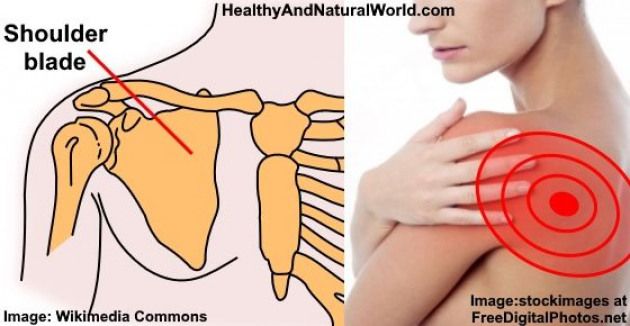
Share:
Symptoms of scapula fractures
Visually, a scapula fracture makes itself felt by swelling and bruising in the upper back or shoulder – above the acromion and coracoid process. The patient is also worried about severe pain, which increases with hand movements and even breathing, since the chest is involved in the process and its movement leads to displacement of the damaged bone. The listed pain sensations can also occur with other injuries, but if they persist for longer than 3-5 days, the cause is most likely a fracture of the scapula.
Typically, patients with fractures cannot raise their arm from the side of the injury and must keep it pressed against their body to reduce pain. Often the injury is accompanied by flattening or deformity in the injured area.
Article checked
Kuchenkov A.V.
Orthopedist • Traumatologist • Surgeon • Phlebologist • Sports doctor • 25 years of experience
Publication date: March 24, 2021
Review date: February 22, 2023
Article content
Causes
Varieties
Diagnosis
Fractures of the scapula are determined on the basis of examination, palpation, hand mobility tests and the results of instrumental diagnostic methods.

 It causes fractures of the neck, coracoid, acromial processes of the scapula, articular cavity.
It causes fractures of the neck, coracoid, acromial processes of the scapula, articular cavity. To assess the state of the surrounding structures, an MRI of soft tissues is performed.
To assess the state of the surrounding structures, an MRI of soft tissues is performed.
